Sustainable Web Design 2025: Reducing Environmental Impact, Optimizing User Experience

Explore the latest sustainable web design trends for 2025. Learn how to create eco-friendly websites, optimize speed, and deliver the best user experience.
Sustainable Website Design 2025: Towards a Green Future

In the face of increasingly severe climate change, sustainable website design is no longer a trend but has become an urgent requirement. The year 2025 marks a significant turning point, as businesses and web developers become more aware of the importance of minimizing the environmental impact of online activities. Green web design is not just about making websites look beautiful, but also about creating an efficient, user-friendly, and energy-efficient digital experience.
The Importance of Green Web Design
Green web design is a holistic approach focused on reducing carbon emissions and energy consumption related to building, hosting, and using websites. This includes optimizing images, code, choosing eco-friendly hosting, and reducing data transfer. A sustainable website not only helps protect the environment but also offers many other benefits, including improved performance, enhanced SEO, and a positive brand image.
Sustainable Design Trends in 2025
- Using Natural Colors: Choose colors inspired by nature, such as green, blue, and earth tones, to create a relaxing and approachable feel. These colors often have low contrast, helping to reduce eye strain and save energy.
- Optimized Images: Use efficient image compression formats like WebP and AVIF, and optimize image sizes to reduce page load times. Avoid using excessively large or unnecessary images. Lazy loading is an important technique to only load images when they appear on the screen.
- Efficient Code: Write clean, concise, and maintainable code. Use frameworks and libraries intelligently, avoiding redundant or unnecessary code snippets. Optimize CSS and JavaScript to minimize file sizes and execution times.
- Choosing Green Hosting: Select a hosting provider that uses renewable energy and has environmental certifications. Green hosting providers often invest in clean energy projects and have policies to reduce carbon emissions.
- Reducing Data Transfer: Optimize content, use caching, and compress data to reduce the amount of data that needs to be transferred between the server and the browser. This not only helps reduce energy consumption but also improves page load speed.
Benefits in Terms of SEO and Brand
Sustainable website design offers many benefits in terms of SEO and brand. A faster loading website will be highly regarded by Google and will rank better in search results. Better user experience is also an important factor in SEO. Users tend to stay longer on websites that load quickly and are easy to use, which helps increase conversion rates and reduce bounce rates. Moreover, a brand that is environmentally responsible will be highly valued by customers. Consumers are increasingly concerned about environmental issues and are willing to support businesses with sustainable commitments.
Examples of Websites Successfully Implementing Sustainable Design
Many websites have successfully implemented sustainable design principles and achieved impressive results. For example, Patagonia's website is known for using optimized images, clean code, and green hosting. Ecosia's website is a search engine that plants trees, using advertising revenue to plant trees around the world. These websites are not only environmentally friendly but also have excellent user experiences.
At **Vinawebapp.com**, a professional website design company in Da Nang, Vietnam, we always strive to apply sustainable design standards in every project. We believe that green web design is not only a responsibility but also an opportunity to create efficient, user-friendly websites that deliver long-term value.
Tips and Checklist to Implement Sustainable Design
- Analyze your current website: Use tools like Website Carbon Calculator to measure the environmental impact of your current website.
- Optimize images: Use online image compression tools or WordPress plugins to reduce image size without reducing quality.
- Optimize code: Use tools like Google PageSpeed Insights to identify code issues and optimize them.
- Choose green hosting: Research and choose a hosting provider with environmental certifications.
- Use caching: Use caching plugins to reduce page load times.
- Minimize the number of plugins: Only use necessary plugins and remove unused plugins.
- Regularly check and update: Regularly check and update your website to ensure it is always running efficiently and sustainably.
UI/UX in Sustainable Design
UI/UX plays an important role in sustainable design. A website with a user-friendly interface, easy to use, and provides a good user experience will encourage users to stay longer and reduce unnecessary visits. This helps reduce data transfer and energy consumption. UI/UX factors to consider in sustainable design include:
- Easy navigation: Ensure users can easily find what they need on the website.
- Responsive design: Ensure the website displays well on all devices, from desktops to mobile phones.
- Fast page load speed: Minimize page load times to improve user experience.
- Quality content: Provide useful and engaging content to attract and retain users.
- Accessibility: Ensure the website is accessible to everyone, including people with disabilities.
Tools to Measure the Environmental Impact of a Website
There are many tools available to measure the environmental impact of a website. These tools help you identify areas for improvement and track your progress. Some popular tools include:
- Website Carbon Calculator: Calculate the carbon emissions of your website.
- PageSpeed Insights: Assess your website's performance and provide recommendations for improvement.
- EcoGrader: Assess the environmental friendliness of your website.
By using these tools, you can monitor and improve the environmental impact of your website, moving towards a more sustainable digital future.
**Vinawebapp.com** encourages developers and website owners to start applying sustainable design principles today. Every small action can make a big difference.

